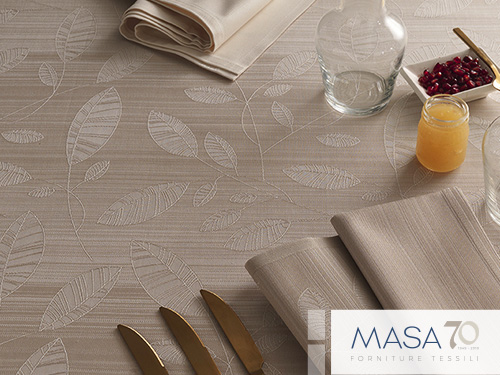HOW MUCH COLOURS CAN AFFECT YOUR RESTAURANT’S CUSTOMERS

You can immediately recognise an elegant table as a result of the harmony that it transmits. This balance is certainly due to an impeccable mise en place, but also to the careful blending of colours. In the catering industry attention to detail is vital in giving the client an impression of class, taste and refinement, and, from a chromatic perspective, a well-arranged and beautiful table cannot fail to create an essential ingredient in ensuring maximum satisfaction.
But how much colours can affect your restaurant’s customers? And, most importantly, what are the colours which, more than any others, have a particularly positive impact on them? In this short guide, we will show you how the colour palettes affects your customer’s satisfaction, and offer some useful advice to improve your service as a consequence of a little extra attention to these details.
A colour for every style
Every single restaurant is furnished according to the tastes of its owners and managers. For example, there are those who decorate their establishments with bright colours for the walls, complemented by prominent furnishings, ornaments and other special items. Some, on the other hand, prefer a chicer, more minimalist style, favouring pastel hues and more sophisticated, understated furnishings. As a consequence, even the choice of table linen must reflect the restaurant’s character and personality, adapting the rest of the interior design to its style.
In general, an often successful choice for smaller restaurants lies in opting for lighter colours, such as white, beige or pearl grey; tones that provide a more spacious impression for an establishment. Additionally, neutral colours also play a crucial role at a subconsciously level, transmitting a sensation of peace and relaxation to customers and thereby enticing them to not just stay at their table for as much time as necessary, but also to return to the same premises again. From the perspective of table linen, when faced with a wall painted in pearl grey, for example, an excellent idea may be to opt for white tablecloths and napkins (perhaps elegantly embellished).
Another interesting option, from a chromatic perspective, is the palette of greens. Indeed, this colour, in its various nuances instills a relaxing and comfortable ambience and can therefore also be used to decorate a restaurant, particularly if we are talking about a restaurant offering organic or vegetarian dishes.
On the other hand, warmer colours, like red, require greater attention. From a psychological perspective, red actually encourages the appetite on the one hand, but on the other, leads to an increase in heart rate, inducing customers to eat their meal quickly. This colour, when used on both walls and table linen, is therefore particularly suitable in the event that you want to encourage rapid customer turnover, while it is not recommended for more exclusive, niche contexts.
Colour combinations for every need
Choosing a colour palette as much for the restaurants furnishings as for the table linen is an excellent idea for those who do not want to take any risks. To have a positive impact on customers, sometimes it is necessary to use your imagination, combining very different colours which, however, if correctly combined, can really make the difference, lending a unique style and personality to the restaurant.
The mix of orange, brown and green, for example, is perfect in a lot of contexts, especially for ethnic or vegetarian restaurants. Also, for chicer establishments, however, opting to use contrasting colours can be the right choice: the table linen in brown shades, for example, goes very well with ecru-colored walls and modern or traditional furniture.
If you are using contrasting colours you must pay attention to the combinations, because if it is true that strong shades such as orange and brown go very well together, it is also true that colours like red and pink could have a negative effect on how your restaurant is perceived and, consequently, on your customers.




